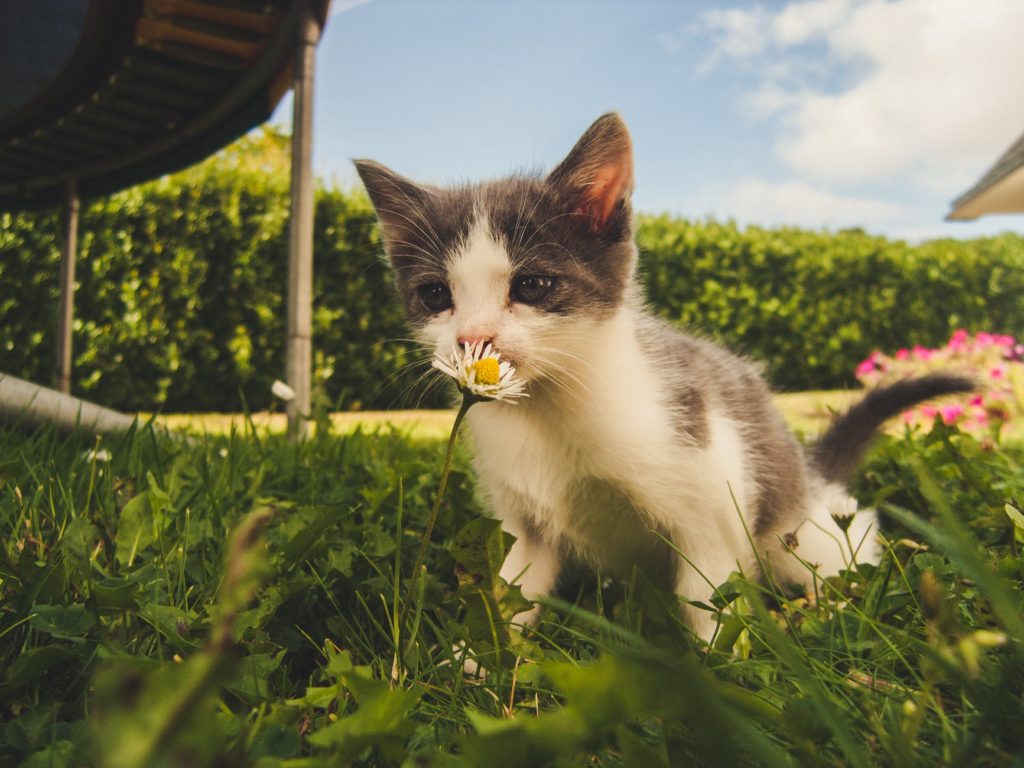Separation Anxiety in Cats
Cats, our beloved companions, bring joy and warmth to our lives. Yet, like us, they too can experience moments of anxiety. Separation anxiety, a prevalent concern among cat owners, can deeply affect our feline friends’ well-being. In this comprehensive guide, we delve into the nuances of separation anxiety in cats, exploring its origins, symptoms, and effective treatment strategies.

Table of Contents
Understanding Separation Anxiety in Cats – 7 Proven Ways
Separation anxiety in cats manifests as distress and unease when they are left alone for extended periods. This condition often arises due to disruptions in their environment or routine, such as relocating to a new home, alterations in their caregiver’s schedule, or the loss of a companion animal.
1. Recognizing Behavioral Changes
Separation anxiety in cats often manifests through noticeable changes in their behavior. When left alone, cats with separation anxiety may exhibit excessive vocalization, such as persistent meowing or yowling. They might also engage in destructive activities, like scratching furniture, chewing on items, or knocking things over. These behaviors are typically a cat’s way of coping with the stress and discomfort caused by being alone. Understanding these signs can help cat owners identify separation anxiety early and take steps to address it.
2. Environmental and Routine Disruptions
Cats are creatures of habit and thrive on consistency. Significant changes in their environment or daily routine can trigger separation anxiety. Moving to a new home is a common cause, as the unfamiliar surroundings can make cats feel insecure and anxious. Similarly, changes in their owner’s schedule, such as longer work hours or frequent travel, can disrupt their sense of stability and lead to anxiety when left alone. Maintaining a consistent environment and routine as much as possible can help mitigate these effects. This creates seperation anxiety in cats.
3. Loss of a Companion Animal
Cats often form strong bonds with other animals in the household. The sudden loss of a companion animal, whether through death or separation, can leave a cat feeling isolated and stressed. This loss can be particularly challenging for cats that have been closely bonded with their companion, leading to heightened separation anxiety when they are left alone. Providing extra attention and comfort during such times can help ease their anxiety.
4. Over-grooming and Health Implications
One of the physical manifestations of separation anxiety in cats is over-grooming. Cats may excessively lick or chew their fur to the point of causing bald spots, sores, or skin irritation. This behavior is often a self-soothing mechanism in response to anxiety but can lead to significant health issues if not addressed. It’s essential for cat owners to monitor their pet’s grooming habits and consult a veterinarian if over-grooming is observed, as it may indicate underlying anxiety or other health problems.
5. Inappropriate Elimination
Cats with separation anxiety may start urinating or defecating outside their litter box. This behavior is often a sign of distress and can be particularly frustrating for cat owners. Inappropriate elimination can occur in areas where the owner spends a lot of time or on their personal belongings, indicating the cat’s attempt to mix scents and feel closer to their owner. Addressing this issue involves understanding the root cause of the anxiety and providing solutions to make the cat feel more secure. This creates separation anxiety in cats.
6. Appetite Changes
Changes in appetite are another common symptom of separation anxiety in cats. Some cats may lose interest in food or refuse to eat altogether when their owner is away. This lack of appetite can lead to weight loss and other health complications. Conversely, some cats might overeat as a way to cope with their anxiety. Monitoring your cat’s eating habits and ensuring they have access to their preferred food can help manage these appetite changes. In severe cases, consultation with a veterinarian or a pet behaviorist may be necessary.
7. Importance of Early Intervention
Early identification and intervention are crucial in managing separation anxiety in cats. Observing your cat’s behavior and noting any signs of distress when you are preparing to leave or after you’ve left can provide valuable insights. Addressing separation anxiety early can prevent the condition from worsening and improve your cat’s overall well-being. Strategies such as environmental enrichment, interactive play, and the use of calming products can significantly reduce anxiety levels. In more severe cases, professional help from a veterinarian or an animal behaviorist may be required to develop an effective treatment plan.
Causes Behind Separation Anxiety
Various factors contribute to separation anxiety in cats. Primarily, changes in their daily routines or surroundings can unsettle them, disrupting their sense of security and stability. Additionally, the absence or loss of a companion animal can intensify their feelings of isolation and distress.
1. Changes in Routine
Cats thrive on routine and predictability. They often rely on regular schedules for feeding, playtime, and interaction with their owners. Sudden changes in this routine, such as alterations in feeding times, play sessions, or the amount of time spent with the cat, can disrupt their sense of security. When their routine is disrupted, cats may become anxious and stressed, leading to separation anxiety. Consistency is key in maintaining a cat’s emotional well-being, and any significant changes should be introduced gradually to minimize stress. This creates separation anxiety in cats.
2. Relocation to a New Home
Moving to a new home is a major change that can trigger separation anxiety in cats. The unfamiliar environment, new scents, and different layout can be overwhelming for a cat that is used to a certain territory. This disorientation can lead to feelings of insecurity and anxiety, especially when left alone in the new space. To ease this transition, it’s important to provide familiar items, such as their favorite bed, toys, and blankets, and to gradually introduce them to different areas of the new home.
3. Changes in Ownership or Family Dynamics
A change in ownership or significant alterations in the family dynamics can be particularly distressing for cats. Cats often form strong bonds with their primary caregiver, and a change in this relationship can lead to anxiety. For example, if a cat’s owner goes through a significant life change, such as a divorce or the arrival of a new baby, the cat may feel neglected or displaced. These changes can disrupt the cat’s sense of stability and lead to separation anxiety. Providing extra attention and maintaining a consistent routine during such times can help alleviate their stress.
4. Extended Absences of the Owner
Cats that are used to constant companionship may struggle when their owner suddenly starts spending long hours away from home due to work, travel, or other commitments. The extended absence can make cats feel abandoned and insecure, triggering separation anxiety. Gradually acclimating the cat to longer periods of solitude can help reduce anxiety. This can be done by starting with short absences and gradually increasing the duration, ensuring the cat feels safe and secure in their environment. This creates separation anxiety in cats.
5. Loss of a Companion Animal
The loss of a companion animal can be a significant trigger for separation anxiety in cats. Cats often form close bonds with other pets in the household, and the sudden absence of a companion can leave them feeling lonely and anxious. This is especially true for cats that have never been alone before or have always had another animal around for companionship. In such cases, providing extra comfort, attention, and possibly introducing another companion animal can help mitigate the anxiety caused by the loss.
6. Traumatic Experiences
Cats that have experienced traumatic events, such as being abandoned, rehomed multiple times, or suffering from abuse, are more prone to developing separation anxiety. These past experiences can make them more sensitive to changes and more likely to feel insecure when left alone. Understanding the cat’s history and providing a stable, loving environment can help them overcome these anxieties. Additionally, using positive reinforcement and creating a safe, comforting space can help build their confidence and reduce anxiety. This creates separation anxiety in cats.

7. Lack of Mental and Physical Stimulation
Cats require mental and physical stimulation to stay healthy and happy. A lack of engaging activities or insufficient environmental enrichment can lead to boredom, which can exacerbate separation anxiety. Providing a stimulating environment with plenty of toys, puzzles, climbing structures, and interactive play sessions can help keep a cat’s mind occupied and reduce anxiety. Ensuring that they have activities to engage in while alone can help them feel more secure and less distressed during periods of separation.
8. Early Weaning and Lack of Socialization
Kittens that are weaned too early or those that do not receive adequate socialization during their critical developmental periods may be more prone to separation anxiety. Early weaning can prevent kittens from learning essential coping mechanisms and social skills from their mother and littermates. Proper socialization, including positive interactions with humans and other animals, helps kittens develop into well-adjusted adults. Without these experiences, they may struggle with independence and become overly reliant on their caregivers. This creates separation anxiety in cats.
9. Illness or Medical Conditions
Underlying health issues can also contribute to separation anxiety in cats. Pain, discomfort, or chronic illnesses can make cats feel more vulnerable and anxious. For instance, conditions like hyperthyroidism, arthritis, or dental problems can exacerbate stress and anxiety. It’s important to have a thorough veterinary examination if a cat shows signs of anxiety, as treating any underlying medical conditions can significantly reduce their anxiety levels.
10. Changes in the Household Environment
Even minor changes in the household environment can trigger anxiety in sensitive cats. This can include rearranging furniture, introducing new pets or family members, or even changing the scent of the home through new cleaning products or air fresheners. Cats are highly perceptive to their surroundings, and such changes can disrupt their sense of security. Gradual introductions and maintaining familiar scents and objects can help ease their anxiety during these transitions.
11. Lack of Personal Space
Cats are territorial animals and need a safe, personal space where they can retreat and feel secure. A lack of a dedicated space, such as a quiet room, a cozy bed, or high perches where they can observe their surroundings without being disturbed, can contribute to their anxiety. Providing a designated safe zone with familiar objects and minimal disruptions can help reduce their stress levels and provide a sanctuary when they feel anxious. This creates separation anxiety in cats.
12. Genetic Predisposition
Some cats may have a genetic predisposition to anxiety. Certain breeds, like Siamese and Burmese cats, are known to be more prone to anxiety-related behaviors. These breeds may be more sensitive to changes and more dependent on their human companions, making them more susceptible to separation anxiety. Understanding the breed-specific tendencies can help owners take proactive measures to prevent and manage anxiety in these cats.
13. Sensory Overload
Cats can experience sensory overload from excessive noise, strong smells, or constant visual stimuli. Living in a noisy environment, such as near a busy street, or being exposed to loud household appliances can cause stress and anxiety. Creating a calm and quiet environment, providing escape routes, and minimizing exposure to loud noises can help alleviate sensory-related anxiety. Ensuring a peaceful and serene environment is essential for their emotional well-being.
14. Previous Negative Experiences
Cats that have had negative experiences, such as being abandoned or spending time in a shelter, may develop a heightened fear of being left alone. These experiences can leave lasting emotional scars, making them more vulnerable to separation anxiety. Providing a stable, loving home and consistent care can help rebuild their trust and confidence over time. Patience, positive reinforcement, and creating a secure environment are crucial in helping these cats overcome their anxiety.
Live Pee Free! Odor Eliminator 100% Eliminates Pet Odor on Contact. 20% Off. No Enzymes, No Fragrance, No Detergent, No Bleach – Safe for Kids and Pets.Symptoms that Signal Separation Anxiety
Identifying separation anxiety in cats involves recognizing specific behavioral and physiological cues:
- Excessive Vocalization: Cats may meow persistently when left alone. This creates separation anxiety in cats.
- Destructive Behavior: This includes scratching, biting, or chewing on furniture and other household items.
- Inappropriate Elimination: Cats may urinate or defecate outside the litter box. This creates separation anxiety in cats.
- Over-grooming: Excessive grooming leading to bald spots or skin irritation.
- Changes in Appetite: Some cats may exhibit reduced appetite or refuse food when separated from their owners. This creates separation anxiety in cats.
- Clinginess Before Departure: Cats with separation anxiety often display clingy behavior when they sense their owner is about to leave. This can include following the owner from room to room, trying to sit on their lap or stay physically close, and becoming visibly distressed when the owner is preparing to leave. This clinginess can be a sign that the cat is anticipating the upcoming separation and is already experiencing anxiety.
- Hiding or Withdrawal: Some cats react to separation anxiety by withdrawing or hiding when their owner is about to leave or has left. They may seek out secluded areas in the house, such as under beds, in closets, or other hiding spots, and remain there for extended periods. This behavior is a coping mechanism to deal with the stress of being alone and can indicate that the cat is feeling overwhelmed by anxiety.
- Restlessness or Pacing: Restlessness or pacing is another common symptom of separation anxiety in cats. When left alone, anxious cats may continuously walk around the house, unable to settle down. This constant movement is a physical manifestation of their internal anxiety and discomfort. It is important to observe if this behavior occurs primarily during periods of separation.
- Excessive Salivation or Drooling: Excessive salivation or drooling can be a physical sign of separation anxiety in cats. When stressed, some cats may begin to drool excessively, which can be seen as wet patches around their mouth or on their fur. This symptom, while less common, is a clear indication of stress and should be monitored closely.
- Vomiting or Diarrhea: Stress and anxiety can also affect a cat’s digestive system, leading to symptoms such as vomiting or diarrhea. If these symptoms occur primarily when the cat is left alone and cannot be attributed to any other medical condition, they may be related to separation anxiety. It’s important to consult a veterinarian to rule out other potential causes and address the anxiety appropriately.
- Increased Dependency and Attention-Seeking Behavior: Cats with separation anxiety may exhibit increased dependency on their owners, constantly seeking attention and reassurance. This can include behaviors such as nudging, head-butting, or pawing at their owner for constant petting and interaction. This increased need for attention can be a sign that the cat is feeling insecure and anxious about being left alone. This creates separation anxiety in cats.
- Changes in Sleeping Patterns: Anxious cats may also experience changes in their sleeping patterns. They might sleep more during the day when their owner is around and stay awake and alert at night, anticipating their owner’s departure the next day. Separation anxiety in cats. Conversely, some cats may sleep excessively as a way to cope with their anxiety, becoming less active and less playful. Monitoring changes in your cat’s sleeping habits can provide insight into their emotional state and help identify potential anxiety issues.
Effective Treatments for Separation Anxiety
Managing separation anxiety in cats requires a tailored approach based on the severity of their condition:
- Environmental Enrichment: Enhance their environment with engaging toys, puzzles, and climbing structures to alleviate boredom and anxiety.
- Interactive Play: Engage in stimulating play sessions to tire them out before periods of separation.
- Calming Products: Utilize pheromone diffusers or calming sprays to create a soothing atmosphere.
- Medications: In severe cases, consult with a veterinarian who may prescribe anti-anxiety medications.
- Behavioral Therapy: Gradual exposure to separation triggers, coupled with positive reinforcement, can help cats acclimate to periods of solitude.
Conclusion
Separation anxiety poses a common challenge for cat owners, impacting their pets’ emotional well-being. By understanding the underlying causes and recognizing symptoms early on, proactive measures can be taken to mitigate its effects. Through a combination of environmental enrichment, behavioral interventions, and, when necessary, medical support, we can provide our cats with the comfort and security they need during periods of separation.
In summary, addressing separation anxiety in cats involves patience, understanding, and a multifaceted approach tailored to each individual cat’s needs. By implementing these strategies, we empower ourselves as caretakers to foster a sense of calm and contentment in our feline companions.



